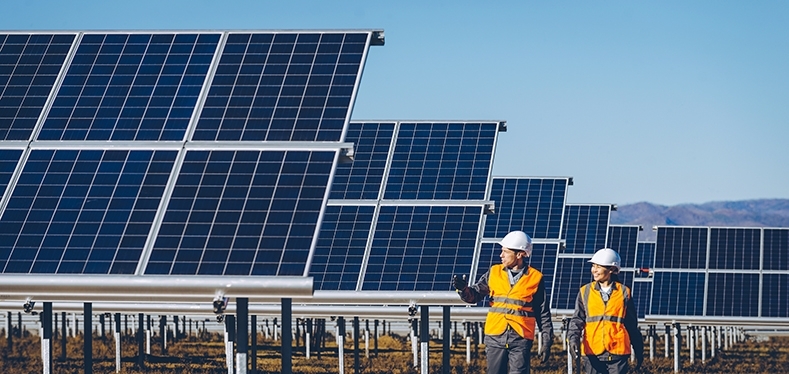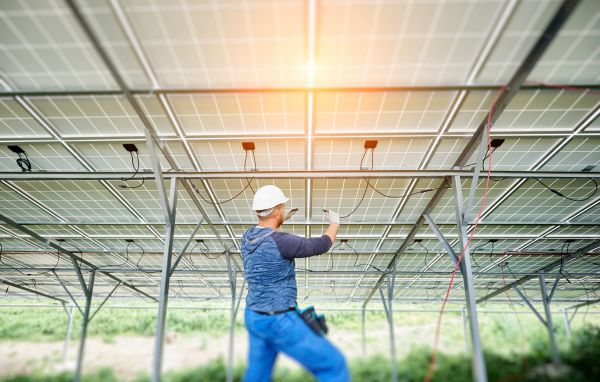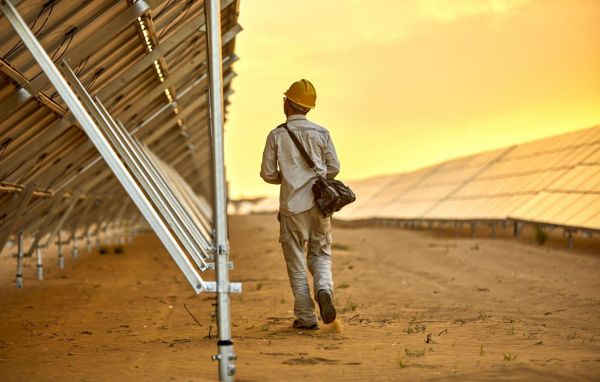Cable technologies support drive lowering LCOE cost in solar industry
Read on to learn how energy generation initiatives focused on higher production from renewable energy sources continue to push solar into the spotlight. As complex networks dependant on vast, interconnected systems cabling infrastructures must be capable of processing energy coming in and energy being processed and pushed out for use in the grid. As a result, technologies used to produce quality cabling become central to sustained and reliable growth in the market.
Solar plays leading role in low carbon future
2020 has been a year to forget for many. The continuing global pandemic and an economic crisis have made an indelible mark on many businesses and industries, but there is a ray of hope. Renewed focus on climate change and Net Zero targets have reinforced the need to continue investing in clean energy programmes. 2020 was, after all, the year in which for the first time ever the UK also saw energy generated from renewable sources exceed that generated by traditional coal plants. As this trend continues into 2021 it will allow leading nations to reach the challenging targets set out in the Paris Agreement, whilst supporting recovering economies with jobs and investment.
Solar energy continues to play a leading role in a sustainable low carbon future. The growth of solar energy has been phenomenal, with the International Energy Agency (IEA) reporting growth of solar photovoltaic (PV) electricity production from 4TWh in 2005 to 570TWh in 2018, all from an installed capacity of almost 500GW. This activity has, to date, been driven by China, Europe, India and the USA but increasingly solar finds supporters in the far-flung corners of the world.

Growth of solar generation in 2019 continued the upward trend reaching 22%, +131TWh, further cementing its leading role to a low carbon future. Despite stalling growth in China, due to policy reform in 2018, growth around the world is being driven by government policy support and by optimising the reduction of total costs. According to a recent report from the International Renewable Energy Agency (IRENA), the levelised cost of electricity (LCOE) generated by utility scale solar PV fell by 82% between 2010 and 2019, from USD 0.378/kWh to USD 0.068/kWh with a 13% reduction year on year in 2019 alone. New grid scale solar plants are now undercutting, the cheapest and least sustainable, existing coal fired generation plants.
Cable production technology developments
The rapid decline in LCOE has been facilitated by a significant reduction in capital costs as well as falling operational costs and the cost of total installed base. Innovative markets, such as India, have been at the forefront outperforming the industry with a cost reduction of 85% to USD 0.045/kWh in 2019, which is 34% below the global average. Critical to this cost reduction has been a significant decline in the cost of solar PV panels as well as the cabling infrastructure itself, which both interconnects the panels and exports power to the grid.
During the last decade of significant growth in solar cable manufacturers have been focused on meeting the challenging demands of the solar PV installed environment with a robust, but cost-effective direct current (dc) cable solution for panel interconnection. Key to meeting the demands is that cable products must meet international standards and performance requirements for low fire hazard, mechanical robustness, as well as chemical, saline, UV and ozone resistance. These technological challenges have resulted in a number of differentiated approaches to cable insulation, or jacketing, systems which are at the heart of a cable’s reliability.
To maintain the defined 90°C operating temperature of solar cables, insulation systems must be crosslinked to form a thermosetting material that remains stable at maximum operating temperatures.
Two key technology platforms have been developed within the cable industry, including:
- Multi component moisture cured, silane crosslinking solutions developed by leading polymer compounders, and
- Electron beam crosslinking technology that modifies a base polymer structure through a concentrated burst of ionizing radiation

Both offer differing approaches to crosslinking cable insulations, or jackets, and have been developing in parallel, across the global market, to meet the requirements of international standards IEC 62930 and BS EN 50618.
The electron beam crosslinking method has high energy costs associated to it and therefore tends to favour markets with lower energy tariffs for industry. On the other hand, silane-based solutions offer a low-capital cost solution for cable producers already invested in water and steam-based curing technology.
Given the potential variability in polymer design and processing the ability to analyse variations and impact on performance are important. So, what if you were able to take it a step further and evaluate a cable’s exact fingerprint? Thermogravimetric analysis (TGA) and Fourier Transform Infrared Spectroscopy (FTIR) technologies enable polymer experts to identify which polymer mixes and quantities are present. Analysis technologies enable end users and manufacturers alike to systematically compare products, predict performance or lifespan, and more.
Quickly, what becomes most imperative in a market of divergent technology platforms is a common evaluation process to assess compliance to, or in excess of, the international standards ensuring consistency of performance and overall reliability over time in service.
Proving solar cable performance
Cable connections perform a critical function in ensuring that power generated by assets is adequately connected to the grid in a reliable and consistent manner. Cable systems should always be rigorously tested and evaluated to validate that they are suitable for use in the installed environment and will deliver the intended performance criteria defined in standards.
As the experts in cable testing, for over 50 years BASEC as one of the leading testing, inspection and certification solutions bodies has been supporting the worldwide cable industry, across all major product types and market segments including energy, data telecommunications and more.
The global solar PV market continues to grow at unprecedented rates driven by government climate change policies and initiatives. This coupled with aggressive cost reductions and product optimisations are driving down LCOE to levels that match or exceed those of fossil fuels is central to the solar industry’s continued success.
The industry must therefore continue to demand reliable and cost-effective cable technologies that have been rigorously tested and evaluated by independent experts to prove product quality. Leveraging years of cable experience specifying BASEC as your established certification provider for solar PV cables helps you to ensure product excellence, consistency and long-term reliability.
Learn more – download your copy of the solar cable testing guide below to kick-start your cable testing needs discussion today.



